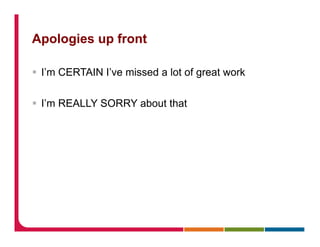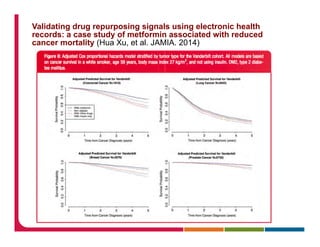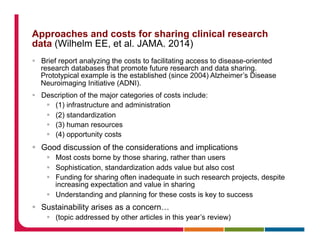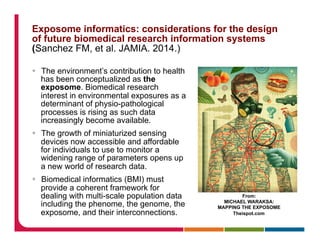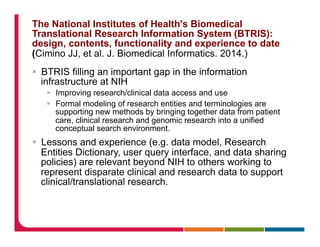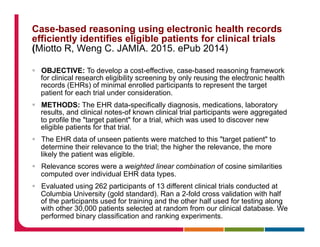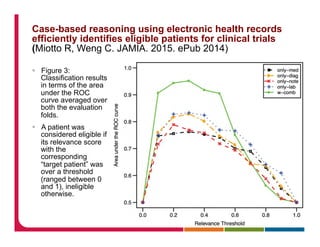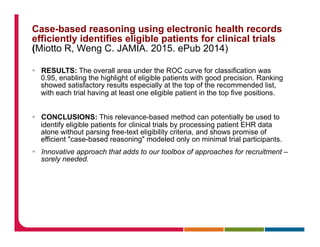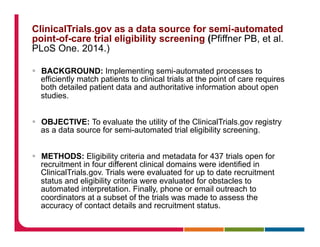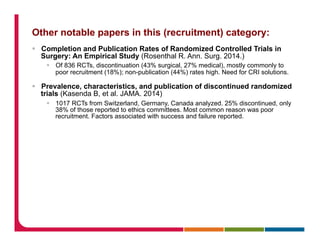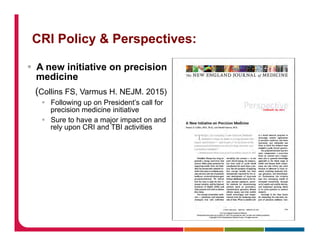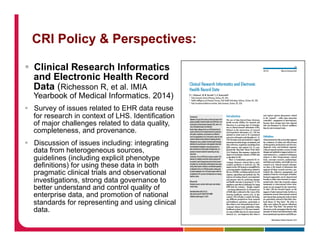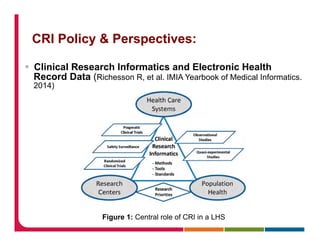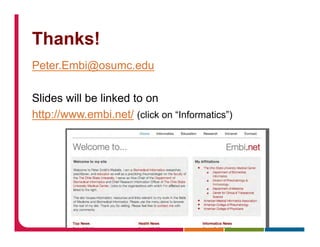The document discusses Peter Embi's approach to presenting on clinical and translational research informatics literature from the past year. It provides an overview of Embi's search strategy and categorization of papers, which involved searching literature databases and recommendations from colleagues. The presentation will focus on summarizing representative papers within categories like data sharing/reuse, methods and systems, recruitment and eligibility, and trends in clinical research informatics.

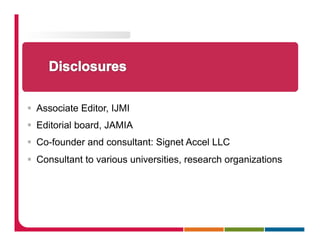

![Source of Content for Session
§ Literature review:
§ Initial search by MESH terms:
§ "Biomedical Research"[Mesh] AND "Informatics"[Mesh] AND
"2014/01/01"[PDat] : "2015/02/01"[Pdat]
§ Resulted in 118 articles
§ Additional articles found via:
§ Recommendations from colleagues
§ Other keyword searches using terms like:
§ Clinical Trials, Clinical Research, Informatics, Translational, Data
Warehouse, Research Registries, Recruitment
§ Yielding 308 total, from which…
§ 99 were CRI relevant
§ From those, I’ve selected 42 representative papers that
I’ll present here (briefly)](https://image.slidesharecdn.com/embicriyir2015-150402132859-conversion-gate01/85/AMIA-2015-CRI-Year-in-Review-4-320.jpg)



